(Photos: Jonathan Maus/BikePortland)
An organized squad of bike riders have become a key part of the daily marches supporting Portland’s Black Lives Matter movement.
For nearly two weeks now there’s been a concerted effort to use bicycles to protect marchers and help protest organizers make their events smooth and safe. As marches led by Rose City Justice have taken over major interstates, the need for a bike-mounted traffic safety volunteers has become more acute. The bike squads work together but aren’t centrally organized. They work in coordination with protest organizers and do whatever is asked of them — from corking intersections and ferrying supplies, to clearing lanes for support vehicles and directing traffic.
At the start of Tuesday’s protest at Jefferson High School in north Portland I was impressed by what I saw: There was an eager group of riders clearly there to help, someone gave a mission debrief and instructions, and hi-viz vests were passed out to riders who wanted them.
I talked to three people who’ve shown up to many of the protests about what they’re doing and why.
“I’m taking pictures, documenting, trying to help maintain peace.”
Jeremy moved to Portland from New York City in 2018. He’s become a major promoter and participant in the local bike scene and has been to about 13 protests so far. Jeremy documents his work on Instagram.
What do you do at the protests?
“I start at the back and try to take care of the sidewalks and make sure that people are staying together. We’re trying to keep everybody together and safe. I’m taking pictures, documenting, trying to help maintain peace. If I’m at the front and they need to open the lane up, I will stop everything I’m doing and yell at the top of my lungs that they need the lane open. Tuesday on the Fremont Bridge there was a big section without a safety fence and one of organizers asked for all the bikes to create a barrier. So I yelled for all the bikers to create a barrier. It was huge! More than 50 bikes formed a wall on one side of the bridge.”
Are you taking orders from anyone?
“No. I’m more of a lone wolf. That’s what I like about working by myself. I can go into the middle of the march or stay on the edges. I’m not tied down. I can go anywhere.”
Anything crazy happened on your watch?
“After we took I-84 we were at NE 33rd and a car tried to turn right into the protests. As he’s turning right he bobbed and weaved through people. That’s when I saw him and I put my bike out extended in front of him and he tried to jerk around to get out so I threw my bike in front of his hood. His car hit the curb. He got out of the car screaming and yelling and poking his chest out. The person who came out was middle-aged white guy with a tucked-in collar. He was saying, “Why are you in my way?! Get out of my way! I’m going to pick somebody up! And the second he comes out of that car the protestors swarm around him. Someone took his keys while he was arguing and he didn’t get them back.”
What can people do if they want to help?
“Don’t try to rush it. If you are there and see people [on bikes] wearing a vest, I’d talk to them. Just come out. Don’t be scared. Everything helps.”
Advertisement
Esther
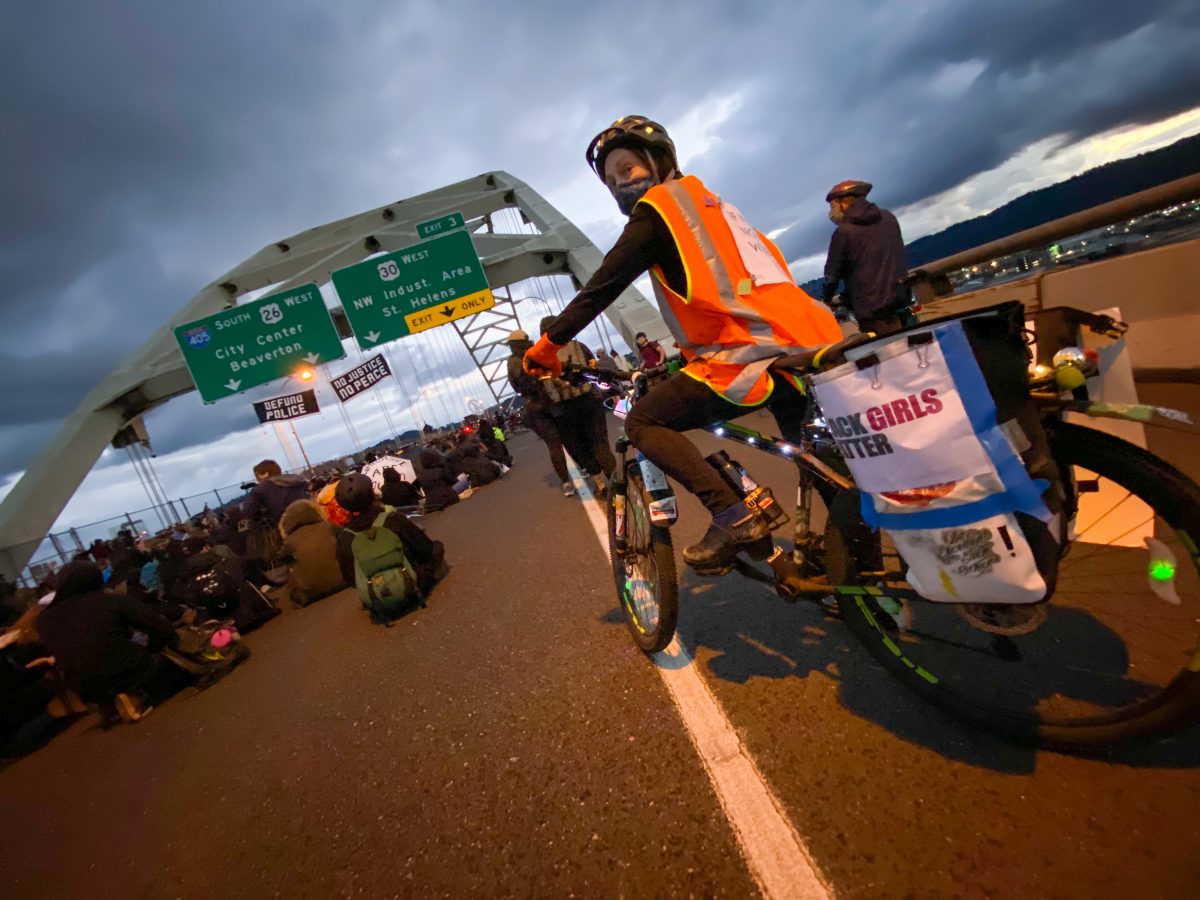
“I plan to be out there as long as they are marching, trying to help them be heard without any harm coming to them.”
Why did you get involved?
“I got involved after I saw a post on the Portland Urban Bike group on Facebook that the march was looking for corkers, maybe two or three days after protests began. I’ve been doing it about two weeks now. I plan to keep coming out every day I can, probably 5 or 6 nights a week, as long as they keep marching.
One of the reasons I’m out here is I read an article where some guy drove into a rally, supposedly accidentally, somewhere in California I think, and seriously hurt someone. And reading it, I thought, if it was really an accident, it could so easily have been avoided with some good corking. So I plan to be out there as long as they are marching, trying to help them be heard without any harm coming to them.”
What do you do during the marches?
“I mostly just use the corking skills I learned by watching others on group rides the last year or so — keep the march together as it goes through intersections and create a friendly and helpful buffer between vehicles trying to get somewhere and our marchers, to keep everyone safe. As we get more people helping, including the motorcycles now, and as people get more experience with the marching (and depending on the route and nature of the intersections), the style has changed a bit. We try to cork out a block from the march now, at a point it’s easy for drivers to divert. We want to avoid road raging, and keeping drivers moving (even if not in the direction they wanted to go) minimizes that.
Wearing such a big orange vest, I end up getting a lot of questions from both drivers/passersby and the marchers themselves asking about the route, or how to get involved. We often don’t really know, and are just shadowing the march to keep them safe, along the parallel streets. A bit more organization has developed now, with some cyclists who have a handle on it and enjoy taking a leadership role trying to arrange spare hi-viz gear and a few instructions for people who want to help.
Bikes are also able to zip up and down the line to relay information or questions from the teams corking ahead and afar. I have no direct contact with organizers, but some of the ones directing the lead vehicles will often call out for bikes here or there to help as they spread out in complicated intersections. After a few nights out there you get a feel for who to listen to when things are moving.
How can others get involved?
“You can always just show up and watch other cyclists who seem to be helping, and follow their lead. It’s valuable to have multiple bikes at each intersection, so if you see an under-attended corking need feel free to roll up and join in.
Especially if you plan to be out after dark, remember to wear hi-viz and light up your bike really well. Having a flashlight or reflective gloves to help direct cars is useful too. One last thing: be ready for angry drivers and please keep your own emotions under control. Most of them do not actually want to hurt anyone, but do want to yell their inconvenience out at you, and if they are caught by surprise by the corking, they will generally start out feeling quite defensive and may lash out verbally (at least). De-escalate when at all possible, and when not, get some back-up and do your best to warn everyone of approaching danger and stay safe yourself. Support the march and their message and do your best to keep everyone calm and moving and safe from physical harm.”
Advertisement
LiL Yeti

“So far the level of communication, cohesiveness of those involved, mutual respect shown, and positive attitudes have been spot on, and improving daily.”
How did you get involved and what motivates you to show up?
“My involvement began simply by showing up. I happened to come across some information that a group was meeting at Revolution Hall so I packed a few things into a backpack, and made my way there. Having no clue what to expect, I decided to take my bike with me on the march…
I was already having thoughts about getting more involved when I found myself in the middle of an intersection downtown, during the march on my second day, and there was an obvious “oops” about to happen with marchers and cars attempting to use the intersection at the same time. I’ve got a professional flagging background so felt confident in using my skills to help all present navigate safely. As I was in the middle of doing it, a random person from the crowd came up behind me and adorned me with a bright orange traffic vest. I put it on, and thanked the random altruist; as I had not planned on doing any traffic mitigation, I had not planned by wearing any specific safety gear. I continued providing my services as a knowledgeable individual until the remainder of the procession had made its way into and onto Pioneer Square.
At this point in the evolution of what is now the Rose City Justice organization, to the best of my knowledge, there was not an official “bicycle crew”, rather individuals such as myself, some with “corking” experience, some with bright colors/vests, some with blinking signs/wands, and some with none of the above, who were simply showing up and lending a hand. Keep in mind that the development and evolution of both the organizations themselves, as well as all assisting parties (traffic mitigation via bicycle and motorcycle, food/snack stations, protest sign distributors, etc.) had all happened organically. There was not at that point anyone “telling folks what to do” or really giving any specific direction. Individuals and small groups of people were taking it upon themselves, as I had, to simply help out where help seemed needed.”
How has the bike support crew evolved in the past few weeks?
“Over the course of that first week these seemingly random altruistic acts by individuals seemed to be taking shape. We were seeing lots of consistency, in that the same people were showing up, and taking on the same roles as they had in days passed. We were beginning to see different levels of organization forming and evolving, with people naturally gravitating towards various positions of leadership and specific duty/responsibility. Myself personally, with my flagging background, years of experience in collegiate marching band (large group navigation and direction), and natural leadership skills, have taken it upon myself to assume a leadership position specifically with the bicycle portion of the “corking” crew. There is an adjunct crew of motorcycles that formed in a very similar fashion, with individuals attaining leadership positions from the same consistency of showing up, proactive-minded thinking, and stellar levels of productive communication.
As of yesterday when you and I met, I would say we the bicycles, along with we the motorcycles, have achieved a level of organization such that we now have (and the labels are more for the sake of description purposes, at this point) lead roles, consistent/daily participants, occasional participants, one-and-done peeps, and a number of new people every day. So far the level of communication, cohesiveness of those involved, mutual respect shown, and positive attitudes have been spot on, and improving daily.”
If you want to use your bike to support Portland’s Black Lives Matter movement, LiL has a few words of wisdom:
— We are here to assist our BIPOC community, so please make that your priority if you choose to attend.
– Bright clothes and lights are super helpful in both keeping the cyclist themself, as well as the marcher procession, safe.
– Helmets are recommended for all those choosing to be “on wheels” during the event.
– Water and snacks are available at both starting-point, and at most destination locations, but it’s always good to bring your own water light snacks, just in case.
– Dress in layers and plan for any/all weather by checking the weather forecast ahead of time. Be prepared.
– Please refrain from showing up intoxicated and refrain from ingesting intoxicants while assisting with the bicycle corking crew, for obvious safety reasons.
— Jonathan Maus: (503) 706-8804, @jonathan_maus on Twitter and jonathan@bikeportland.org
— Get our headlines delivered to your inbox.
— Support this independent community media outlet with a one-time contribution or monthly subscription.


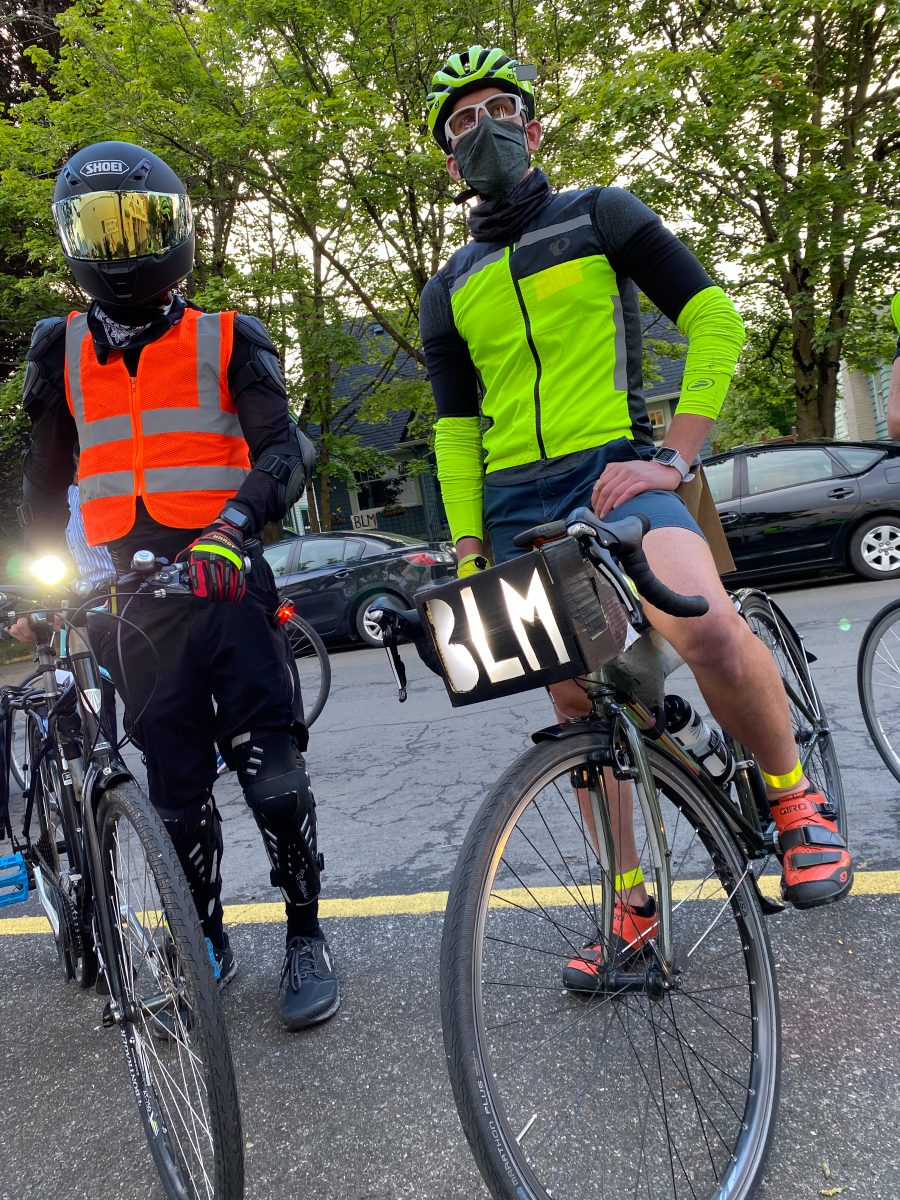
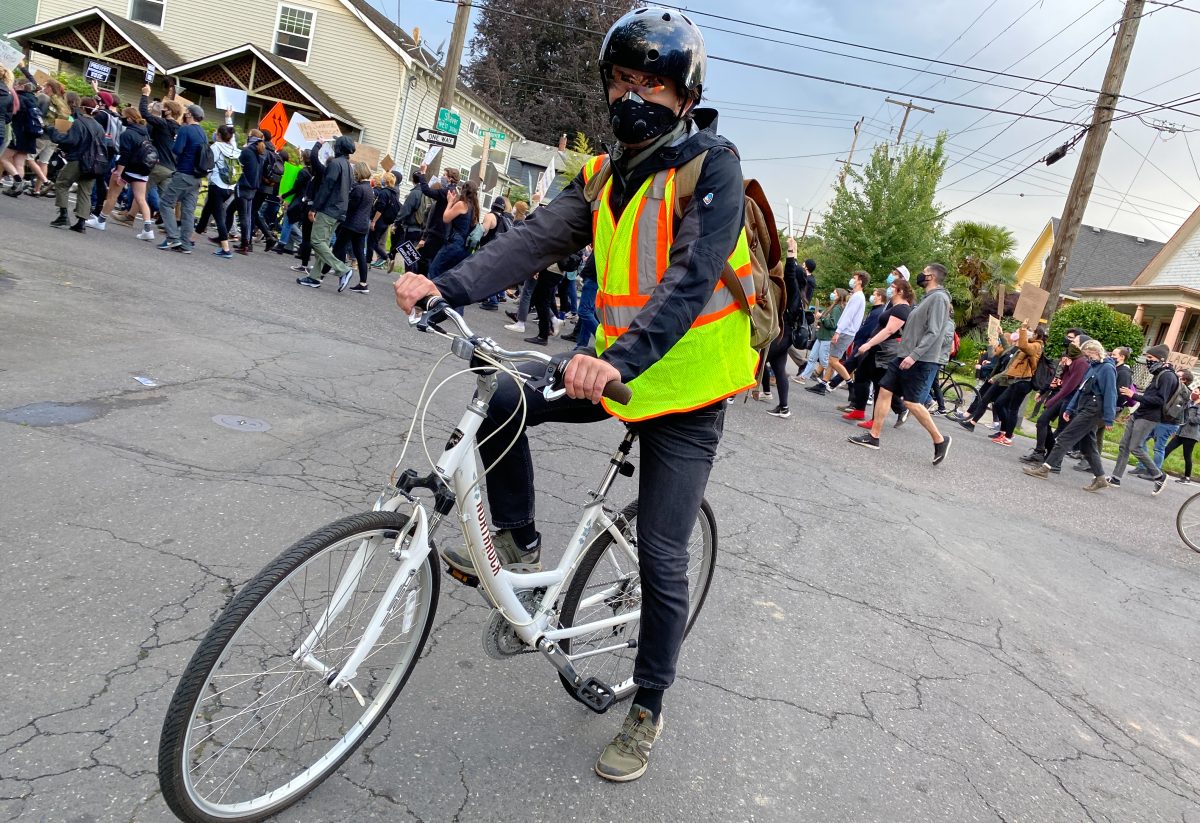
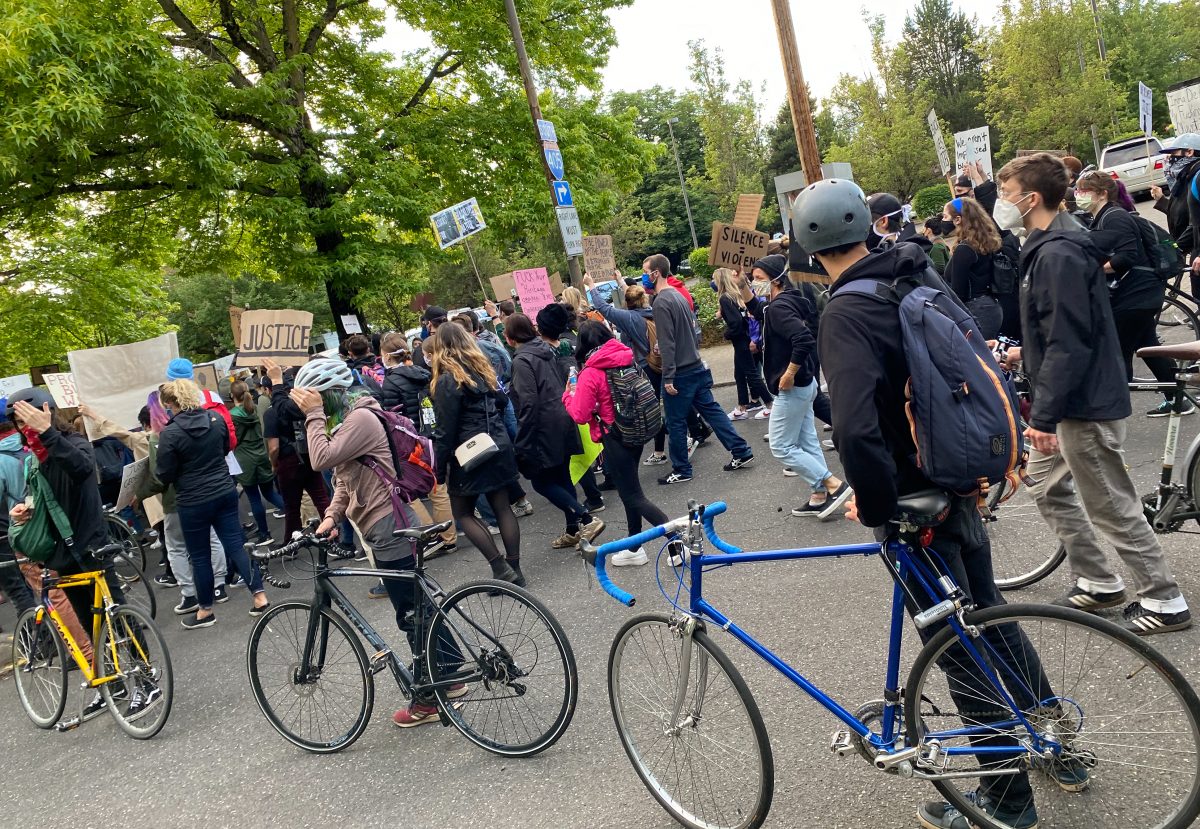

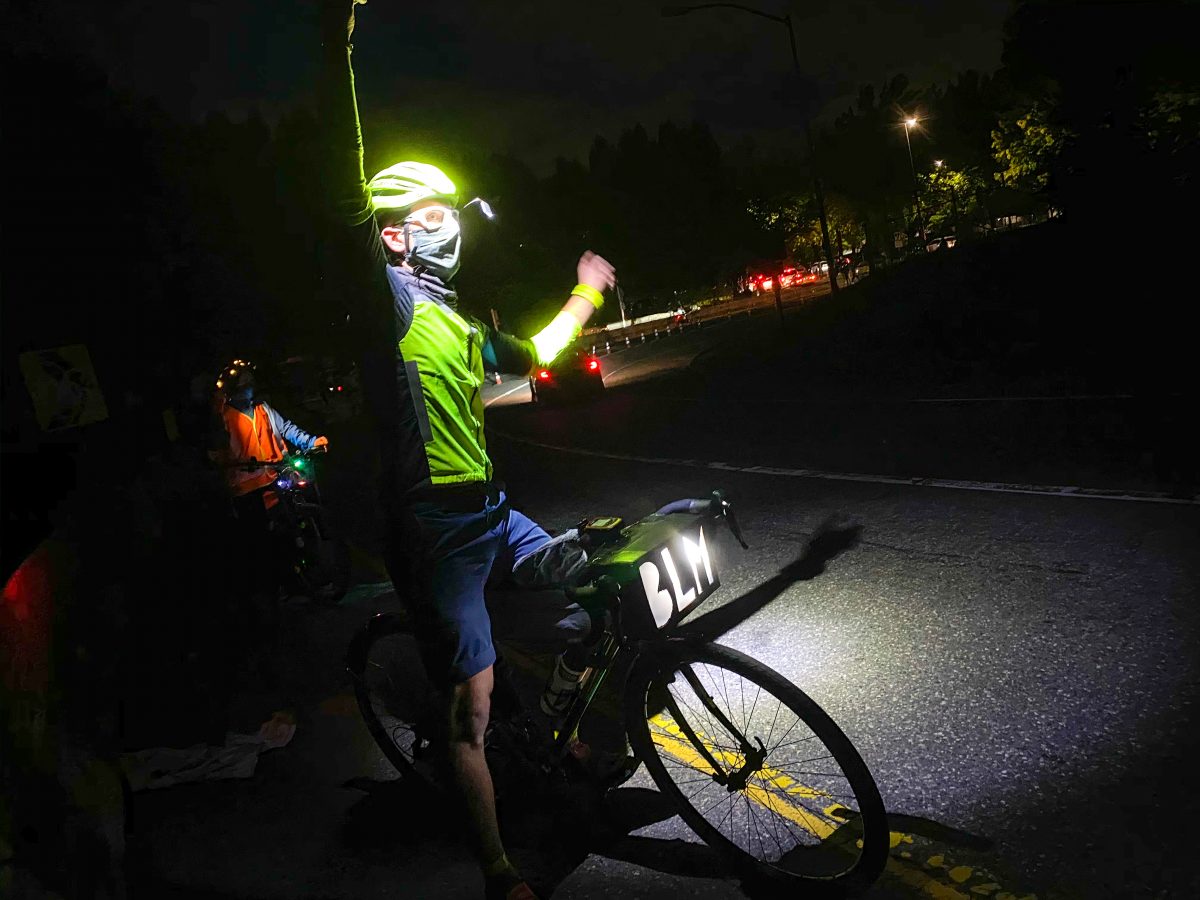


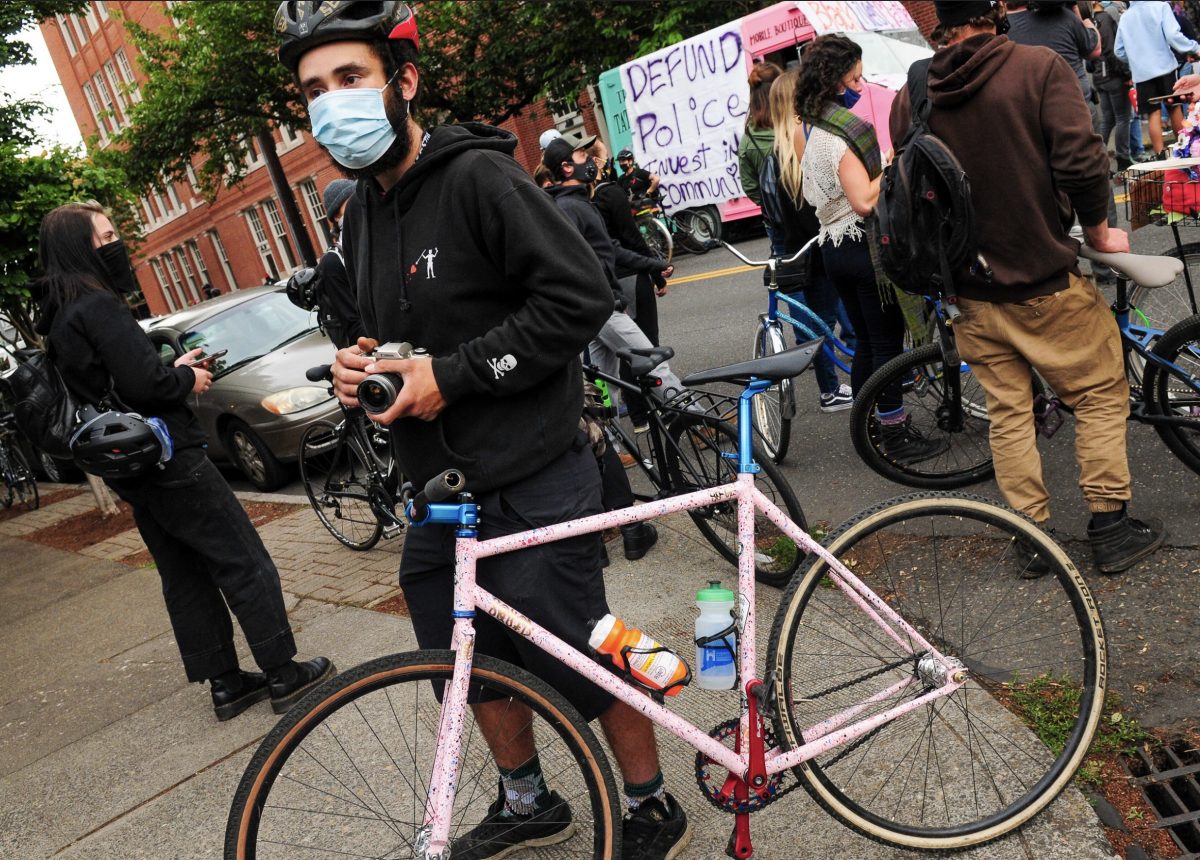
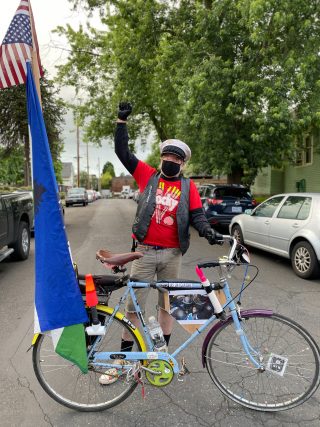
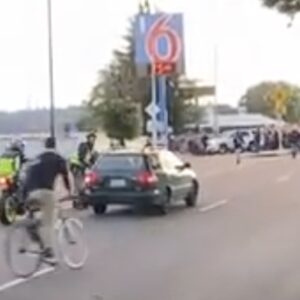

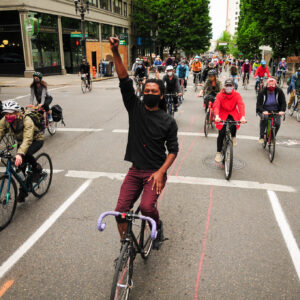

Thanks for reading.
BikePortland has served this community with independent community journalism since 2005. We rely on subscriptions from readers like you to survive. Your financial support is vital in keeping this valuable resource alive and well.
Please subscribe today to strengthen and expand our work.
I’m glad they are corking. The street is a shared space, even when it seems cars are the dominant species.
I’m heartened by the lack of interest in this piece.
Maus, you are just a performative ally. Take your white guilt and do something better than make a living off of cultural appropriating the civil rights movements.
Thanks for the feedback!
Aren’t you being a little hard on him? It’s not like he’s race hustler or something of that nature. Yeah there does seem to be an abundance of race related stories lately, but other than CONVID, what else is going on?
Thanks for the reporting, Jonathan. While my personal interests usually stay in the macro of systems/movements/etc (it’s why I’m bad at politics), it’s good to tie in to the individual level from time to time.
I’m so proud of all of these folks who are giving their time and effort to ensure the safety of everyone involved. Especially proud of my son, ‘Lil Yeti’! Thank you, Jonathan, for your insightful, informative article.